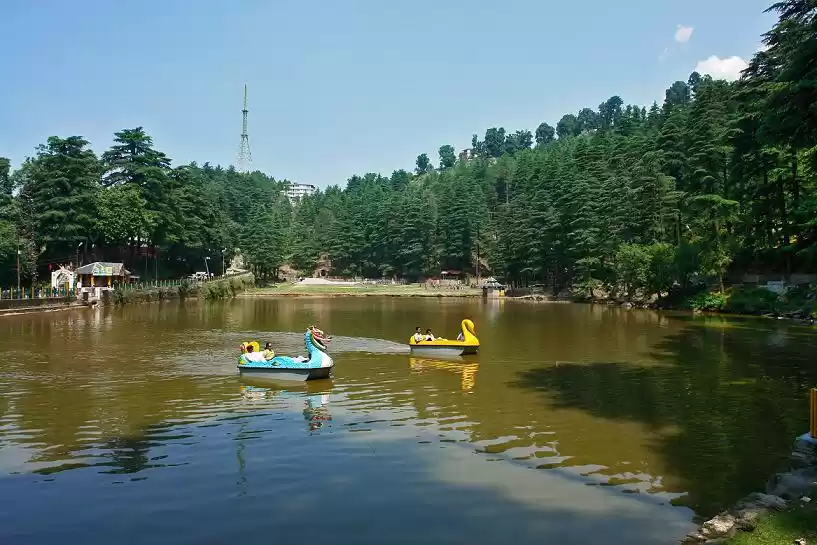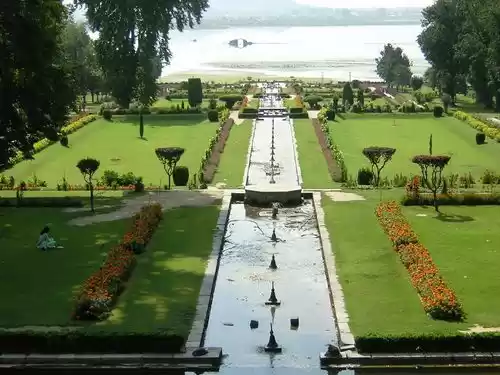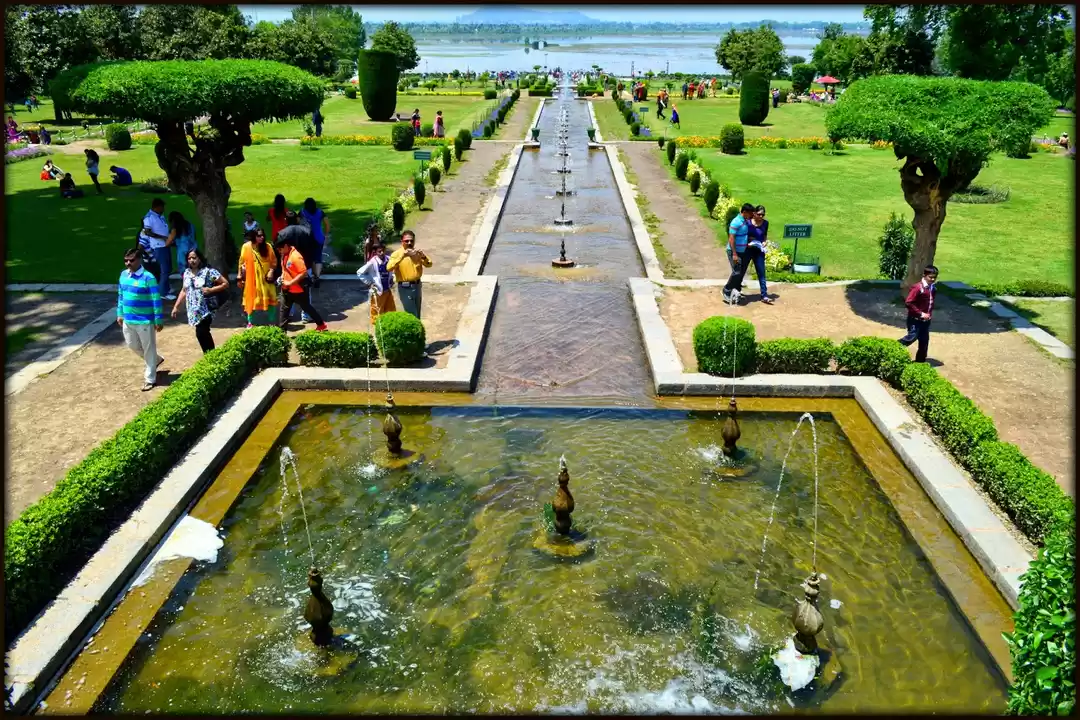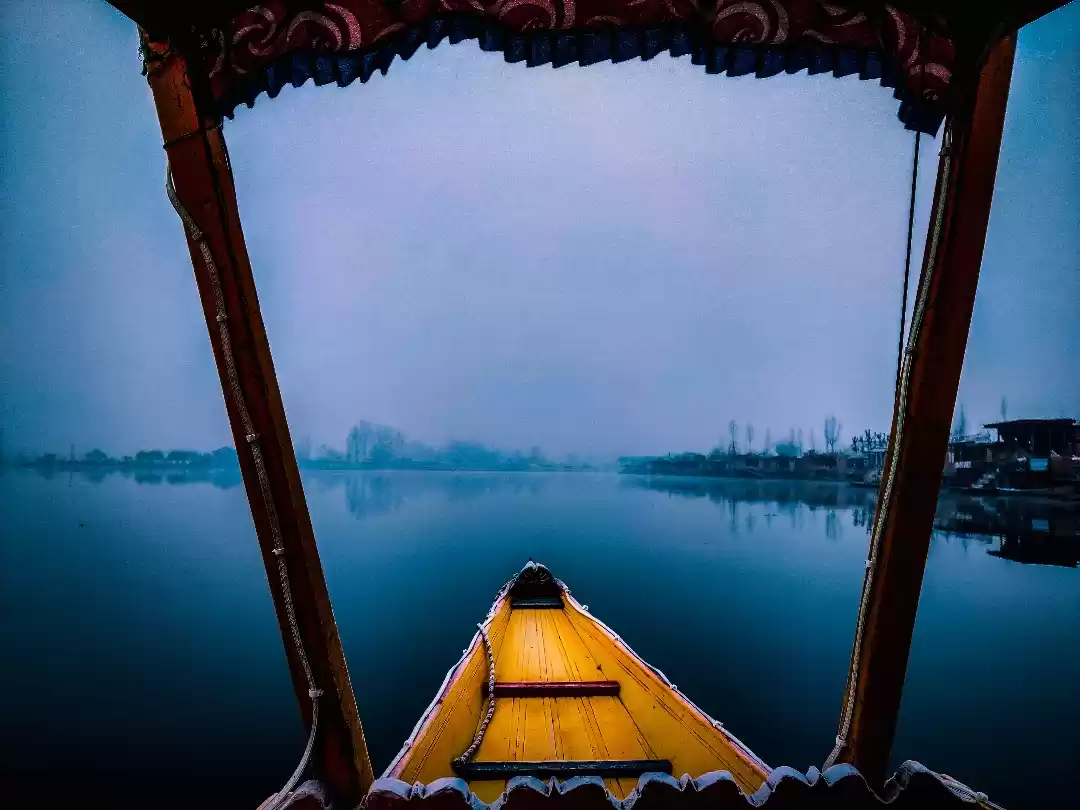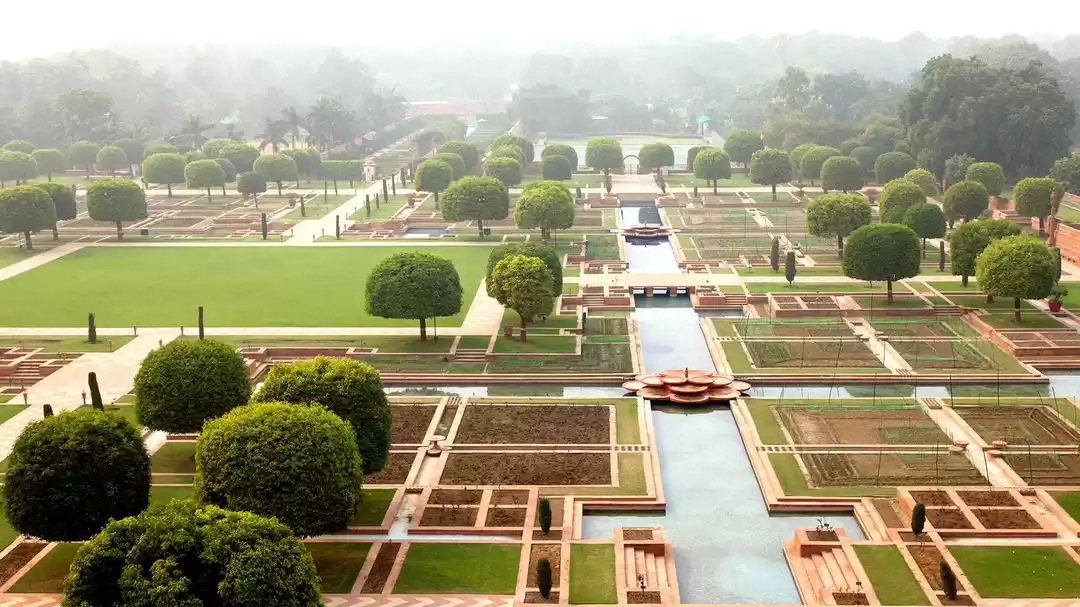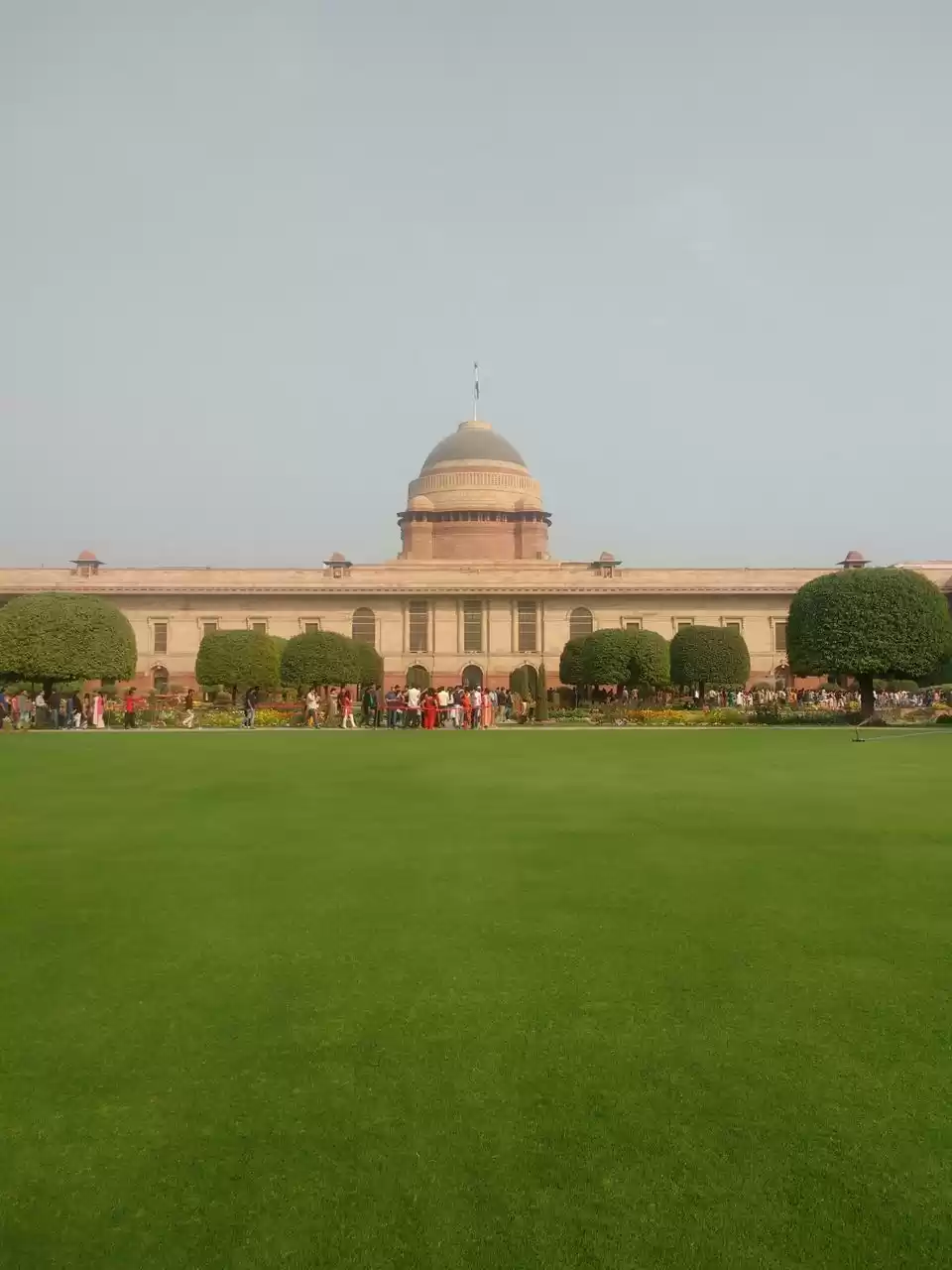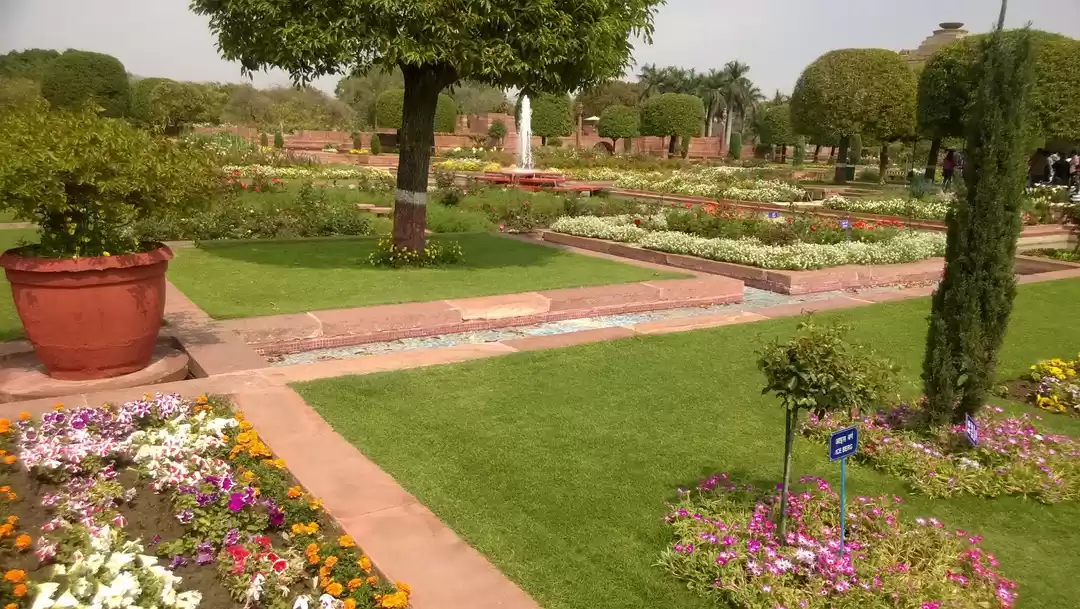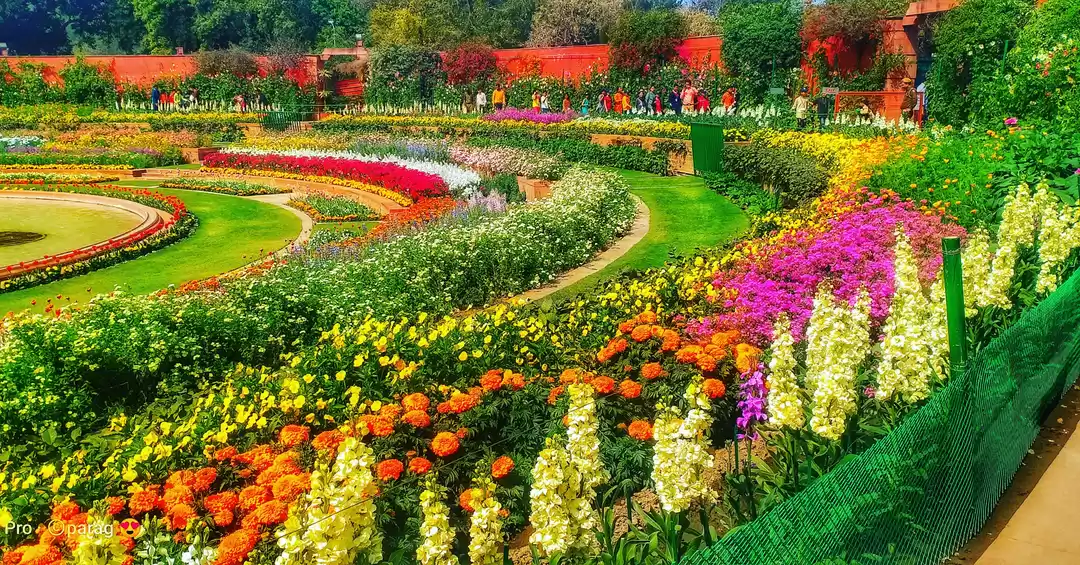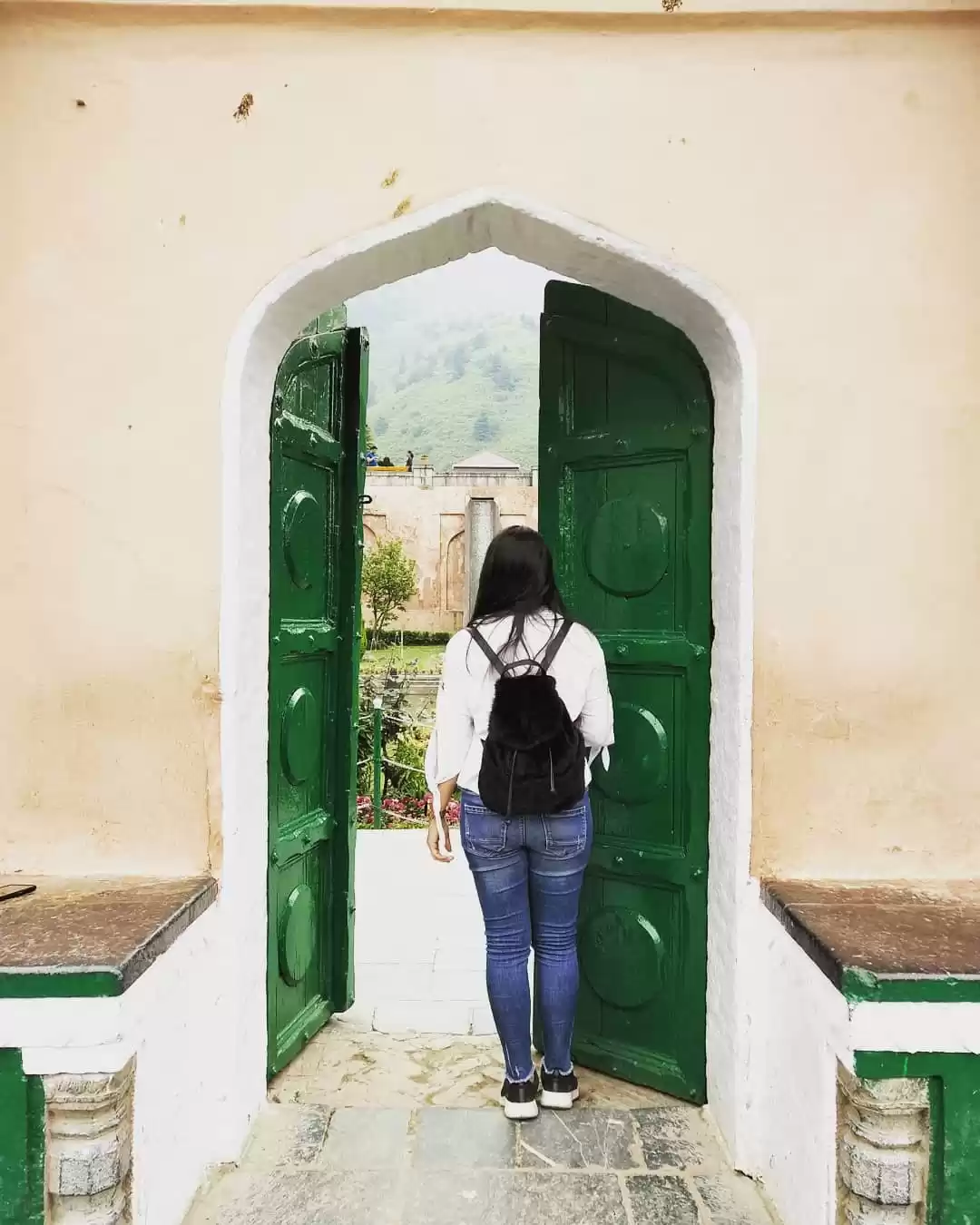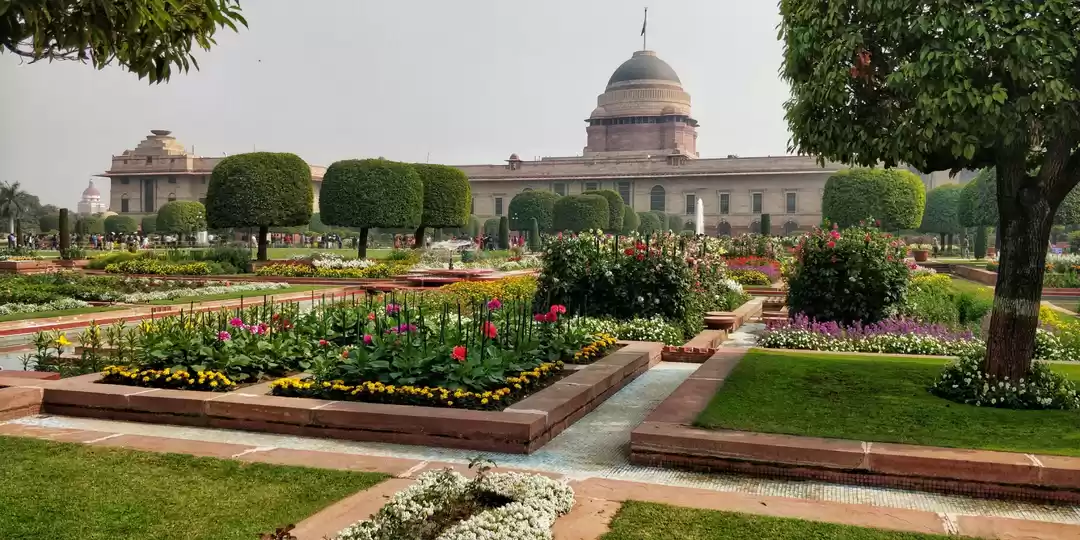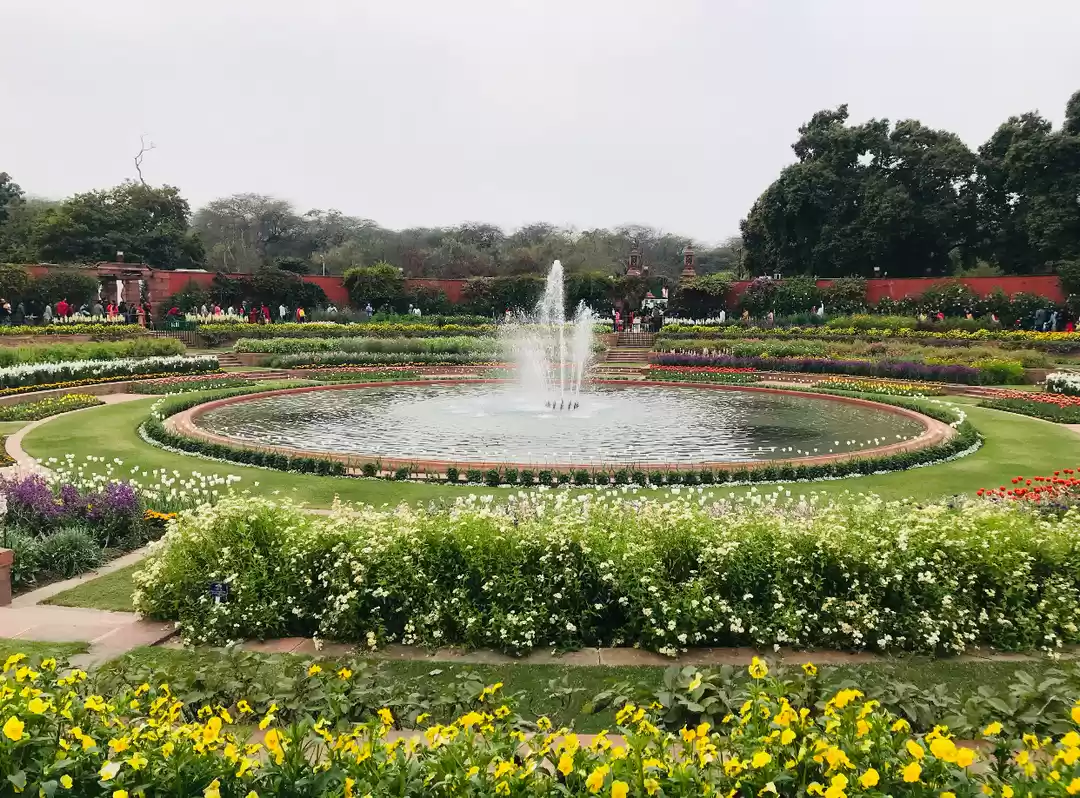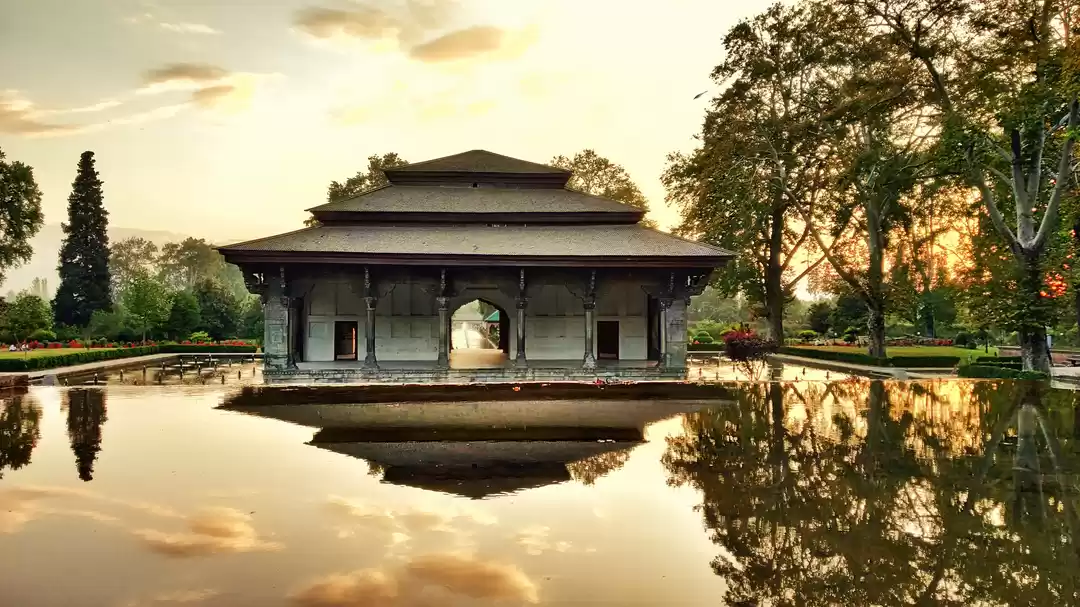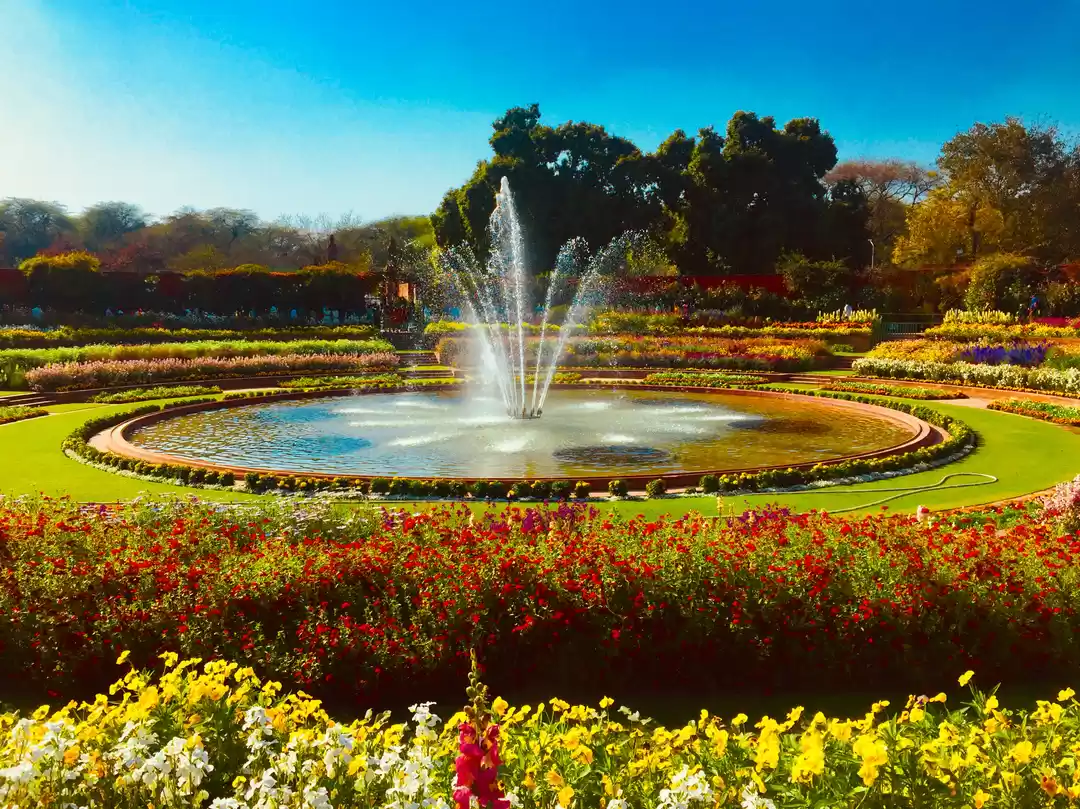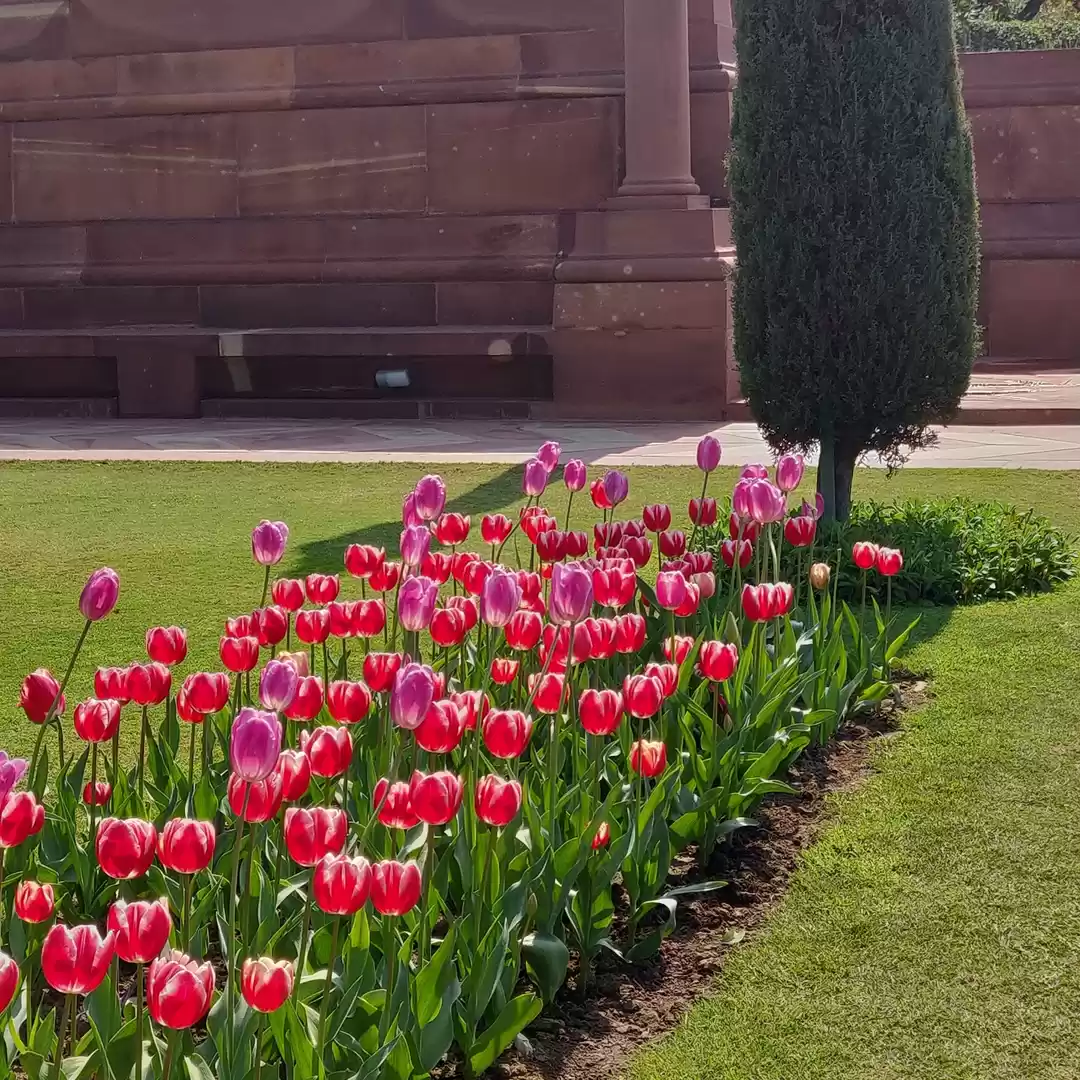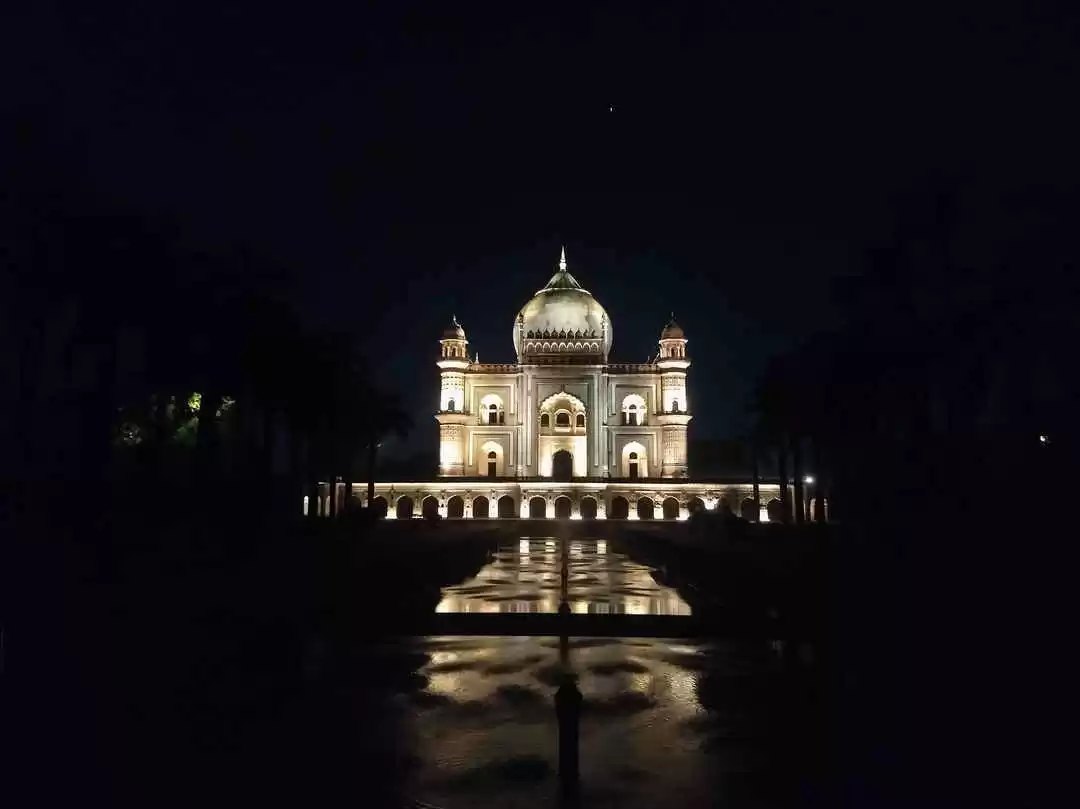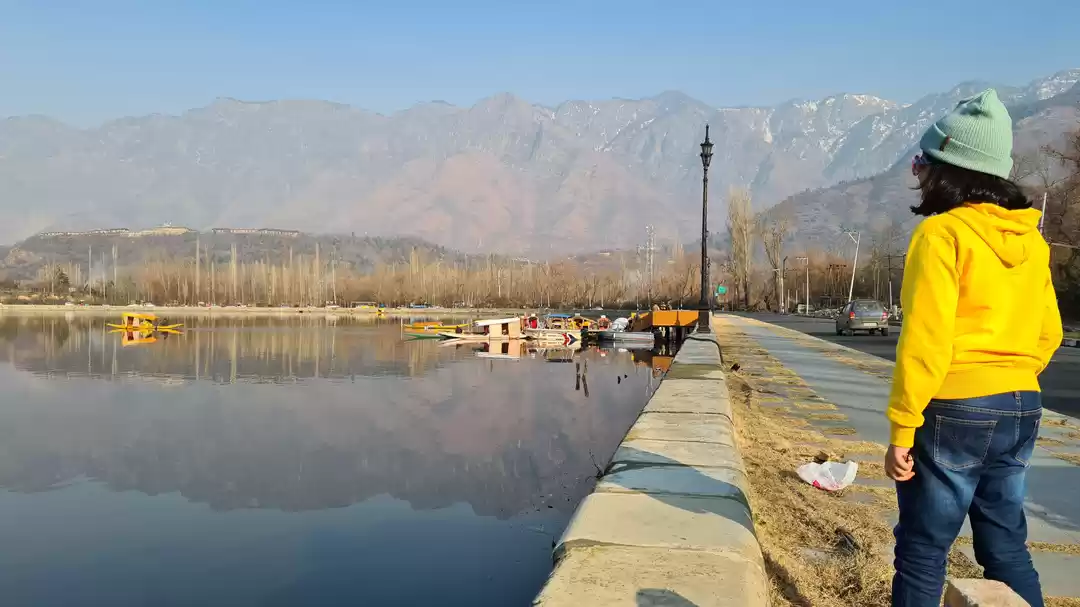If you are looking for a destination that combines natural splendor, cultural heritage, and architectural marvels, look no further than the Mughal Gardens Srinagar. These six gardens, located in and around the city of Srinagar in Kashmir, are the epitome of the Mughal style of landscaping and design. They offer a glimpse into the lives and tastes of the Mughal emperors, who ruled over India from the 16th to the 19th century.
The Mughal Gardens Srinagar are Nishat Bagh, Shalimar Bagh, Chashma Shahi, Pari Mahal, Achabal Bagh, and Verinag. Each garden has its own charm and features, but they all share some common elements, such as terraces, fountains, canals, pavilions, flower beds, and trees. The gardens are also influenced by the Persian, Islamic, and Hindu traditions, creating a unique and harmonious blend of cultures.
In this article, we will provide you with a comprehensive and informative guide to the Mughal Gardens Srinagar, and help you plan your visit. We will cover the history and significance of the gardens, their layout and features, their main attractions and points of interest, and some tips and recommendations for the visitors. We will also tell you about the best time to visit, the entry fee, the timings, the nearby places to eat and stay, and the activities and experiences to enjoy in and around the gardens.

Whether you are a history buff, a nature lover, or a culture enthusiast, you will find something to admire and appreciate in the Mughal Gardens Srinagar. They are not only a testament to the Mughal legacy, but also a living and breathing paradise on earth. Read on to find out more about these magnificent gardens, and why you should visit them at least once in your lifetime.
Nishat Bagh
Nishat Bagh, which means Garden of Joy or Garden of Delight, is the largest and most beautiful of the Mughal Gardens Srinagar. It is situated on the eastern bank of the Dal Lake, and offers stunning views of the lake and the Zabarwan Mountains. The garden was built by Asif Khan, the brother of Nur Jahan, the wife of Emperor Jahangir, in 1633. It is said that Jahangir was so impressed by the garden that he gave it to his wife as a gift, but Asif Khan refused to accept it. This led to a rivalry between the two, and Jahangir stopped the water supply to the garden for some time.
The garden has 12 terraces, representing the 12 zodiac signs, and each terrace has a different theme and design. The garden also has fountains, canals, pavilions, flower beds, cypress trees, and other ornamental plants. The main attractions of the garden are the Sheesh Mahal, a two-storeyed pavilion with glass windows and mirrors, the Baradari, a rectangular pavilion with 12 doors, the Mughal paintings, depicting scenes from the Mughal court and life, and the views of the Dal Lake and the mountains, especially during sunrise and sunset.
The garden is open from 9 am to 7 pm, and the entry fee is Rs. 10 for Indians and Rs. 50 for foreigners. The best time to visit the garden is from April to June, when the flowers are in full bloom, and the weather is pleasant. You can also visit the garden during autumn, when the chinar trees turn red and yellow, creating a magical contrast with the greenery. Some of the nearby places to eat and stay are the Nishat View Restaurant, the Nishat Hill Resort, the Nishat Garden Resort, and the Nishat Palace.
Some of the tips and recommendations for visiting Nishat Bagh are:
- Wear comfortable shoes and clothes, as the garden is spread over a large area, and you will have to walk a lot.
- Carry a water bottle and some snacks, as there are no shops or stalls inside the garden.
- Avoid visiting the garden on weekends and holidays, as it can get crowded and noisy.
- Respect the rules and regulations of the garden, such as not littering, not plucking flowers, not feeding animals, etc.
- Take plenty of pictures and videos, but be careful not to damage or disturb the plants and structures.
Shalimar Bagh
Shalimar Bagh, which means Garden of Love or Abode of Love, is the second largest and most famous of the Mughal Gardens Srinagar. It is located on the northeastern bank of the Dal Lake, and offers panoramic views of the lake and the Pir Panjal Mountains. The garden was built by Emperor Jahangir for his beloved wife Nur Jahan in 1619, and was later expanded by his son Shah Jahan. The garden was used as a royal summer retreat, and many important events and celebrations took place here, such as the marriage of Dara Shikoh, the son of Shah Jahan, and the visit of the Persian poet Saadi.
The garden has four terraces, representing the four stages of love, and each terrace has a different name and function. The first terrace is called the Diwan-e-Aam, or the Hall of Public Audience, where the emperor received his guests and officials. The second terrace is called the Diwan-e-Khas, or the Hall of Private Audience, where the emperor held his private meetings and parties. The third terrace is called the Bagh-e-Faiz Baksh, or the Garden of Bountiful, where the emperor enjoyed the fruits and flowers of the garden. The fourth terrace is called the Bagh-e-Farah Baksh, or the Garden of Delight, where the emperor and his wife spent their romantic moments.
The garden also has fountains, canals, pavilions, flower beds, chinar trees, and other ornamental plants. The main attractions of the garden are the Black Pavilion, a black marble pavilion with a waterfall and a pool, the marble statues, depicting the 12 signs of the zodiac, the musical and light shows, held in the evenings, and the views of the Dal Lake and the mountains, especially during sunrise and sunset.
The garden is open from 9 am to 7 pm, and the entry fee is Rs. 10 for Indians and Rs. 50 for foreigners. The best time to visit the garden is from April to June, when the flowers are in full bloom, and the weather is pleasant. You can also visit the garden during autumn, when the chinar trees turn red and yellow, creating a magical contrast with the greenery. Some of the nearby places to eat and stay are the Shalimar Restaurant, the Shalimar Hotel, the Shalimar Resort, and the Shalimar Palace.
Some of the tips and recommendations for visiting Shalimar Bagh are:
- Wear comfortable shoes and clothes, as the garden is spread over a large area, and you will have to walk a lot.
- Carry a water bottle and some snacks, as there are no shops or stalls inside the garden.
- Avoid visiting the garden on weekends and holidays, as it can get crowded and noisy.
- Respect the rules and regulations of the garden, such as not littering, not plucking flowers, not feeding animals, etc.
- Take plenty of pictures and videos, but be careful not to damage or disturb the plants and structures.
Chashma Shahi
Chashma Shahi, which means Royal Spring or Royal Fountain, is the smallest and most charming of the Mughal Gardens Srinagar. It is located on the eastern bank of the Dal Lake, and offers scenic views of the lake and the Pari Mahal. The garden was built by Shah Jahan’s governor Ali Mardan Khan in 1632, and was later renovated by Maharaja Ranjit Singh. The garden is famous for its natural spring, which is believed to have medicinal properties, and is visited by many pilgrims and tourists.
The garden has three terraces, and each terrace has a different style and design. The garden also has fountains, canals, pavilions, flower beds, fruit trees, and other ornamental plants. The main attractions of the garden are the natural spring, which flows from a stone-carved lion’s mouth, the Iranian influence, which can be seen in the architecture and motifs, the Pari Mahal, which is a six-storeyed palace on a nearby hill, the Buddha statue, which is a relic from the ancient Buddhist era, and the medicinal plants, which are used for various ailments and diseases.
The garden is open from 9 am to 7 pm, and the entry fee is Rs. 10 for Indians and Rs. 50 for foreigners. The best time to visit the garden is from April to June, when the flowers are in full bloom, and the weather is pleasant. You can also visit the garden during autumn, when the chinar trees turn red and yellow, creating a magical contrast with the greenery. Some of the nearby places to eat and stay are the Chashma Shahi Restaurant, the Chashma Shahi Hotel, the Chashma Shahi Resort, and the Chashma Shahi Palace.
Some of the tips and recommendations for visiting Chashma Shahi are:
- Wear comfortable shoes and clothes, as the garden is spread over a small area, but has some steep slopes and stairs.
- Carry a water bottle and some snacks, as there are no shops or stalls inside the garden.
- Avoid visiting the garden on weekends and holidays, as it can get crowded and noisy.
- Respect the rules and regulations of the garden, such as not littering, not plucking flowers, not feeding animals, etc.
- Take plenty of pictures and videos, but be careful not to damage or disturb the plants and structures.

Pari Mahal
Pari Mahal, which means Palace of Fairies or Abode of Angels, is the most unique and mysterious of the Mughal Gardens Srinagar. It is located on the top of a hill, overlooking the Chashma Shahi and the Dal Lake. The garden was built by Dara Shikoh, the son of Shah Jahan, in 1650, and was used as a school of astrology and astronomy. Dara Shikoh was a scholar and a mystic, who was interested in the Sufi and Hindu philosophies, and had a collection of rare books and manuscripts.
The garden has six terraces, and each terrace has a different function and design. The garden also has fountains, canals, pavilions, flower beds, orchards, and other ornamental plants. The main attractions of the garden are the Sufi shrine, which is dedicated to Dara Shikoh’s spiritual mentor Mulla Shah, the astronomical observatory, which is a circular structure with a dome and a hole, the golf course, which is a modern addition to the garden, and the views of the Dal Lake and the city, especially during sunrise and sunset.
The garden is open from 9 am to 7 pm, and the entry fee is Rs. 10 for Indians and Rs. 50 for foreigners. The best time to visit the garden is from April to June, when the flowers are in full bloom, and the weather is pleasant. You can also visit the garden during autumn, when the chinar trees turn red and yellow, creating a magical contrast with the greenery. Some of the nearby places to eat and stay are the Pari Mahal Restaurant, the Pari Mahal Hotel, the Pari Mahal Resort, and the Pari Mahal Palace.
Some of the tips and recommendations for visiting Pari Mahal are:
- Wear comfortable shoes and clothes, as the garden is located on a hill, and you will have to climb some stairs and slopes.
- Carry a water bottle and some snacks, as there are no shops or stalls inside the garden.
- Avoid visiting the garden on weekends and holidays, as it can get crowded and noisy.
- Respect the rules and regulations of the garden, such as not littering, not plucking flowers, not feeding animals, etc.
- Take plenty of pictures and videos, but be careful not to damage or disturb the plants and structures.
Achabal Bagh
Achabal Bagh, which means Place of Solitude or Place of Bliss, is the most secluded and serene of the Mughal Gardens Srinagar. It is located at the end of the Anantnag-Srinagar road, and offers picturesque views of the Achabal River and the Himalayas. The garden was built by Nur Jahan, the wife of Emperor Jahangir, in 1620, and was used as a summer resort. The garden was destroyed by the Afghan ruler Ahmad Shah Durrani in the 18th century, and was later reconstructed by Maharaja Gulab Singh, the founder of the Dogra dynasty.
The garden has five terraces, and each terrace has a different style and design. The garden also has fountains, canals, pavilions, flower beds, chinar trees, and other ornamental plants. The main attractions of the garden are the waterfall, which cascades from a height of 15 feet, the hamam, which is a bathhouse with hot and cold water, the Mughal paintings, depicting scenes from the Mughal court and life, and the views of the Achabal River and the mountains, especially during sunrise and sunset.
The garden is open from 9 am to 7 pm, and the entry fee is Rs. 10 for Indians and Rs. 50 for foreigners. The best time to visit the garden is from April to June, when the flowers are in full bloom, and the weather is pleasant. You can also visit the garden during autumn, when the chinar trees turn red and yellow, creating a magical contrast with the greenery. Some of the nearby places to eat and stay are the Achabal Bagh Restaurant, the Achabal Bagh Hotel, the Achabal Bagh Resort, and the Achabal Bagh Palace.
Some of the tips and recommendations for visiting Achabal Bagh are:
- Wear comfortable shoes and clothes, as the garden is spread over a small area, but has some steep slopes and stairs.
- Carry a water bottle and some snacks, as there are no shops or stalls inside the garden.
- Avoid visiting the garden on weekends and holidays, as it can get crowded and noisy.
- Respect the rules and regulations of the garden, such as not littering, not plucking flowers, not feeding animals, etc.
- Take plenty of pictures and videos, but be careful not to damage or disturb the plants and structures.
Verinag
Verinag, which derives its name from the Sanskrit word Vishnu Naga, meaning the spring of Vishnu, is the most sacred and ancient of the Mughal Gardens Srinagar. It is located at the foot of the Pir Panjal Mountains, and is the source of the Jhelum River, the lifeline of Kashmir. The garden was built by Emperor Jahangir in 1620, and was completed by his son Shah Jahan. The garden is famous for its octagonal tank, which encloses the natural spring, and is adorned with fountains, pavilions, and carvings.
The garden has four terraces, and each terrace has a different style and design. The garden also has fountains, canals, pavilions, flower beds, pine trees, and other ornamental plants. The main attractions of the garden are the source of the Jhelum River, which is considered holy by both Hindus and Muslims, the Hindu and Muslim shrines, which are dedicated to Vishnu and Ali Mardan Khan respectively, the Mughal coins, which are embedded in the walls of the tank, the fish, which are fed by the visitors, and the views of the mountains and the valley, especially during sunrise and sunset.
The garden is open from 9 am to 7 pm, and the entry fee is Rs. 10 for Indians and Rs. 50 for foreigners. The best time to visit the garden is from April to June, when the flowers are in full bloom, and the weather is pleasant. You can also visit the garden during autumn, when the pine trees turn golden and brown, creating a magical contrast with the greenery. Some of the nearby places to eat and stay are the Verinag Restaurant, the Verinag Hotel, the Verinag Resort, and the Verinag Palace.
Some of the tips and recommendations for visiting Verinag are:
- Wear comfortable shoes and clothes, as the garden is located at a high altitude, and you may feel cold and breathless.
- Carry a water bottle and some snacks, as there are no shops or stalls inside the garden.
- Avoid visiting the garden on weekends and holidays, as it can get crowded and noisy.
- Respect the rules and regulations of the garden, such as not littering, not plucking flowers, not feeding animals, etc.
- Take plenty of pictures and videos, but be careful not to damage or disturb the plants and structures.
Conclusion
We hope you enjoyed reading this article, and learned more about the Mughal Gardens Srinagar, the six stunning gardens that showcase the Mughal culture and art in Kashmir. These gardens are not only a testament to the Mughal legacy, but also a living and breathing paradise on earth. They offer a unique and unforgettable experience of the natural splendor, cultural heritage, and architectural marvels of Kashmir.
If you are planning to visit the Mughal Gardens Srinagar, we encourage you to book a package with Tripoto, the leading online travel platform in India. Tripoto offers you the best deals and discounts on flights, hotels, cabs, and activities, and helps you plan your trip according to your budget, preferences, and interests. You can also explore more destinations in Kashmir, such as Gulmarg, Sonamarg, Pahalgam, and Leh, and discover the beauty and diversity of the valley.

